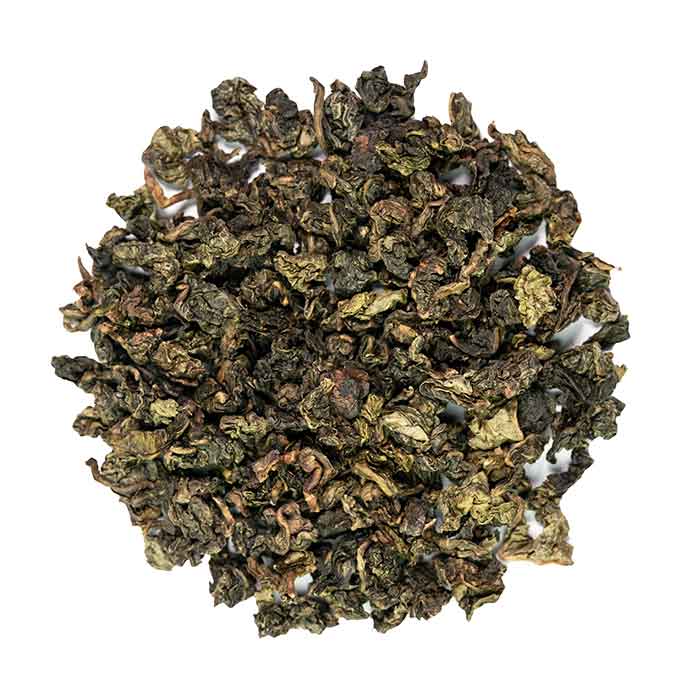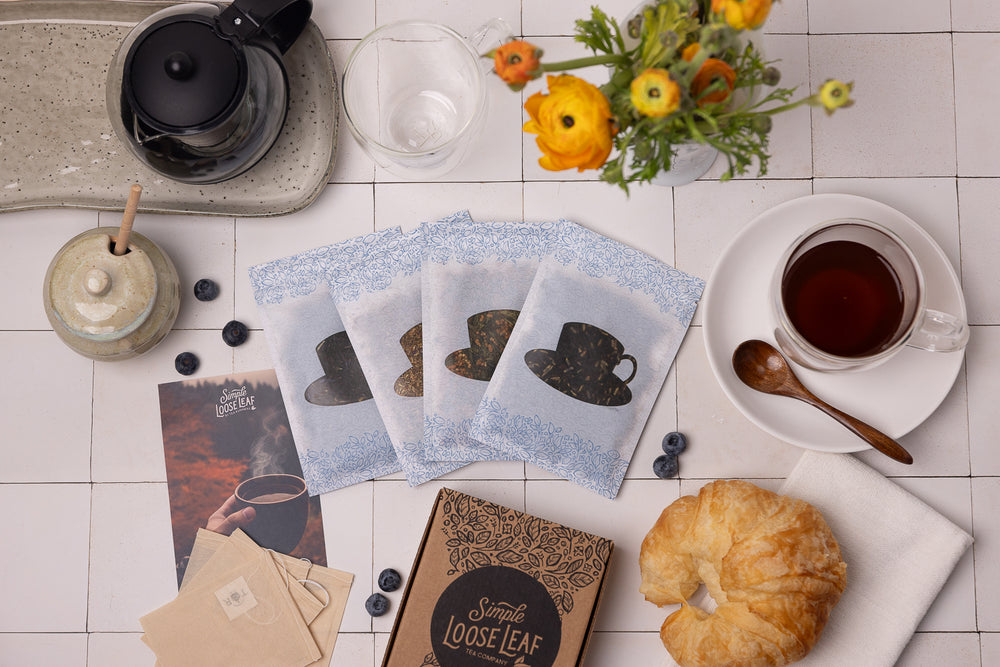What is Tieguanyin tea?
This post may contain affiliate links. Simple Loose Leaf is a participant in the Amazon Associates Program, an affiliate advertising program designed to provide a means for sites to earn advertising fees by linking to Amazon.com. If you want to fall in love with tea, try Tieguanyin. This highly aromatic tea is one of the most popular oolong teas in the world and one of the best representatives of a long and versatile Chinese tea history.
What is Tieguanyin tea?
Tieguanyin, Tie Guan Yin, Ti Kwan Yin. Ti Kuan Yin or the Iron Goddess or Mercy is a Chinese oolong tea from the Anxi county in Fujian province. Fujian is a very important tea province and a cradle of famous Chinese teas. Chinese white tea like Silver Needle and Pai Mu Tan, black Lapsang Souchong and famous WuYi rock tea such as Red Robe, all originate from Fujian. Tieguanyin is a type of Chinese oolong tea, but also a name of the tea cultivar. Just like all real teas tieguanyin it made from Camellia sinensis tea plant. It can be made from tieguanyin cultivar or other tea cultivars. Some Tieguanyin teas may even be a blend of different tea cultivars. The authentic Tieguanyin oolong should always come from Anxi. Today, other areas are producing this tea too. Although it may be similar in shape, and even in flavor, it’s not considered authentic. There are other very similar teas to tieguanyin, like maoxie oolong, huangjingui oolong or benshan oolong. What also makes this tea unique is that it’s actually a really wide category of teas. They can be more or less oxidised, more or less roasted, and have a different flavor profile. What’s common to all of them is that they all have leaves shaped in small, tightly rolled balls and don’t contain any branches. For example, when you brew Taiwanese high mountain teas you will see a bud and a few leaves attached to a branch. Tieguanyin contains leaves only. Tieguanyin can be harvested in spring, summer, autumn and winter. The winter harvest is very rare. The best tieguanyin is harvested in spring and autumn.
Ti Kwan Yin oolong tea from Anxi, Fujian
History of Tieguanyin
There are several legends about the origin of tie guan yin tea. It’s believed this tea was discovered about 300 years ago during the Chinese Qing Dynasty. Legends has it that a poor farmer in Anxi found a deserted temple with the statue of Guanyin. He spent days in cleaning and taking care of the temple until one day the Guanyin goddess appeared to him in his dreams and told him where he can find his reward. The reward was a tea plant that brought him prosperity after planting it in his garden.Health Benefits of tieguanyin tea
Tieguanyin is an oolong tea. Oolong tea contains antioxidants, caffeine, amino acids and other compounds. It’s somewhere between green and black tea. You can guess the level of oxidation by looking at the color of tea leaves and infusion. Greener and brighter infusions will be less oxidized, and darker ones will be more oxidized. Drinking tieguanyin tea may help with weight loss goals[1] and regulating bad cholesterol,[2] fight against some types of cancers,[3] increase alertness, protect against heart disease, improve bone density,[4] prevent dental caries, reduce oxidative stress, regulate blood sugar and boost immune system[5]. Read about oolong tea benefits here.Caffeine Content
Tieguanyin, just like all other oolong teas, contains caffeine. It’s impossible to say how much caffeine will be in each cup of tieguanyin tea. The amount will depend on many factors, from the tea cultivar to processing methods, and the way you brew it. However, the way tieguanyin is usually brewed may extract more caffeine than you would normally extract from, for example, green tea. The same tea leaves are usually used until there is no flavor left, and even then they can be cold-brewed for another couple of hours.Flavor and Taste
Tieguanyin can be roasted, aged, or unroasted and very fresh and green. There are two main types of tieguanyin tea – traditional or chuan tong tieguan yin and modern or qing xiang tieguanyin. Modern styles of tieguanyin tea has a bright emerald to bright yellow color, with floral and creamy notes. This style is the most popular style today. Traditional tie guan yin is more oxidized and more baked. It is smooth, with roasted and fruity notes, and heavier, more complex aroma. Tieguanyin can have many flavor notes - roasted, nutty, creamy, fruity, toasty, honey, floral, fresh, vegetal and mineral. Generally, less baked and oxidised tea will have a fresher and more vegetal flavor.Any side effects of drinking this tea?
Drinking tieguanyin should not cause any side-effects. However, like any other caffeinated drink, drinking too much may cause some side-effects to people sensitive to caffeine. Furthermore, always choose tea from reliable sources to reduce any other potential risks.How to Brew Tieguanyin Tea
Tieguanyin is one of the top oolong teas to try if you are a tea beginner. You can brew this tea in many ways and you can even use boiling water without ruining the flavor.- Regular western-style brewing
- Mug brewing
- Simplified Gong-fu style brewing
Disclaimer: This article is for informational purposes only. It’s not intended to replace medical advice, diagnosis or treatment. Every person is different and may react to different herbs and teas differently. Never use teas or herbs to treat serious medical conditions on your own. Always seek professional medical advice before choosing home remedies.
References:
[1] https://www.ncbi.nlm.nih.gov/pubmed/31062778 [2] https://www.ncbi.nlm.nih.gov/pubmed/24229494 [3] https://www.ncbi.nlm.nih.gov/pubmed/31353716 [4] https://www.ncbi.nlm.nih.gov/pmc/articles/PMC6443991/ [5] https://www.sciencedirect.com/science/article/pii/S2213453015000555
More from:
SLL





Leave a comment